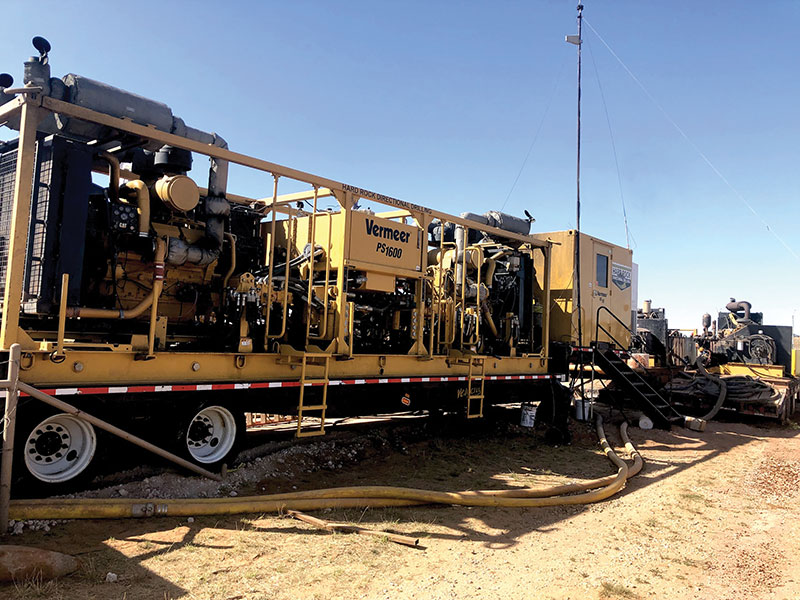May 2022, Vol. 249, No. 5
Tech Notes
HDD Implemented in Nueces Bay Intersect Bore
Special to P&J
NuStar Energy, based in San Antonio, Texas, tapped Hard Rock Directional Drilling to extend one of its three South Texas Pipeline Systems.
The pipeline is designed to move increased volumes of West Texas Intermediate (WTI) crude from the Mid-Continent Oil Field Province, located in the West Texas Permian Basin, to the NuStar Energy Corpus Christi terminal.
The Nueces Bay connection would complete the second stage of the NuStar Energy export project, a new 8-mile (12.9-km), 30-inch (72.6-cm) pipeline from the existing Cactus II pipeline located in Taft, Texas, to the NuStar Energy Corpus Christi terminal.
Completing this final link beneath Nueces Bay would allow NuStar Energy to increase capacity of WTI crude from the Permian Basin, enhancing the growth of Gulf Coast crude exports from the Port of Corpus Christi to global markets.
The first step involved completing a geotechnical analysis and collecting data, including a soil composition analysis, to identify which layers would be best for drilling.
From geotechnical data, Hard Rock Division Manager Tom Forconi enlisted bore planning and engineering experts to draw up design and build specifications from NuStar Energy.
Experts identified an appropriate drilling depth of 100 to 120 feet (30.4 to 36.6 meters) and the soil composition data. Given the length, two bores were required, intersecting at a midway point beneath the often-turbulent waters of Nueces Bay.
Pilot Bores
Two Vermeer D1000x900 drills – one positioned on the south shore and the other directly across the bay on the north – completed the approved design and building plan.
Shallow exit angles of 4 degrees made the tie-in less complicated. The south side bore was slightly more challenging, the team determined, because of the resistance from an oyster reef composition that extended approximately 7,300 feet (2,225 meters) beneath the bay. A tong hammer was used to break and add stem.
Drilling fluid used for each bore consisted of 100% bentonite, selected for its composition properties, which were ideal for the soil composition and the potential effect of bay water during bore exit and intersection tie-ins. The project required three passes originating from each shore, beginning with a 12-1/4-inch (311-millimeter) pilot bore, followed by a 30-inch (762-millimeter) ream pass and the final 48-inch (1,219-millimeter) pass.
Making Connection
The product pipe from the south side was welded in one continuous length on the shoreline and positioned on floats over the bay waters. The south side pipeline was completed first before the north side began.
The high-density polyethylene (HDPE) material for the north bore was welded in one continuous length and positioned in the bay waters on floats in the same way as the south side. When both bores were completed, Hard Rock Directional Drilling crews, Orion Marine Group crews and divers completed the intersect.
Once connected, the north shore drill operator pulled back the pipeline to eliminate slack. To control the buoyancy created by the bay waters during install, sections of both pipelines were coated with concrete.
Additionally, the team determined that the HDPE lines that would be housed inside the steel casing could not be safely added after the pipe string was in place, as originally planned out of concern of breaking inside the product pipe.
So, it was floated into position inside of the product line and then blown out with compressed air to excavate the water and become buoyant inside the 30-inch line.
The project was completed in 37 days. Soon after, WTI crude was flowing freely to the NuStar Energy Corpus Christi terminal. It was the final leg in a vital pipeline system for transporting the oil-rich reserves of the Permian Basin to the Port of Corpus Christi and onto markets around the globe.






Comments